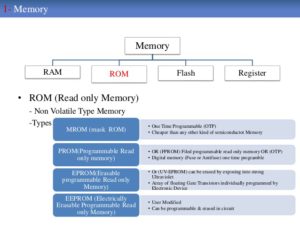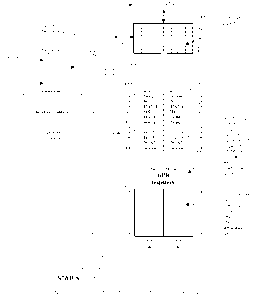Microcontroller Memories Classification
Microcontroller Memories can be divided into two categories of read-only and random access memory according to the function. The so-called read-only, literally understood can only be read from inside, can not be written in, it is similar to our books, when it arrives to our hands, we can only read the content in the book instead of arbitrarily change the contents of the book. The abbreviation of read-only memory is ROM (READ ONLY MEMORY).
The so-called random access memory, that is, can be rewritten at any time, can also read the data inside the memory which include flash and eeprom, it is similar to our blackboard, I can write things at any time, can also erase the content and rewrite with a chalk. The English abbreviation for random access memory is RAM (Random Access Memory). The English abbreviation of these two kinds of memory must be remembered.
Note: Both read-only and random access microcontroller memories refer to the normal working conditions, that is, when using this memory. Otherwise, how does the data in the read-only memory come from? In fact, this principle is also very understandable. The book can’t be changed when we get it. When it is still the raw material – white paper, it can of course be printed by the printing house.

microcontroller memories classification
PROM, called programmable memory. This is like our exercise book. It is blank when you buy it. It can write things up, but once it is written, it can’t be erased, so it can only be written once. If it is wrong, it will be reimbursed. (now eliminated)
EPROM, a programmable read-only memory called UV erase. After writing the contents of it, if you feel unsatisfied, you can use a special method to remove it and rewrite it. This is to use ultraviolet light, you can remove the word and then rewrite it. Of course, the number of cancellations is too large, so it is not good, as a result of that, the number of times this chip can be erased is limited – hundreds of times. (now eliminated)
EEPROM, also called E2PROM, is called electrically erasable programmable read-only memory. The written things can also be erased and rewritten, but it is convenient. It does not need illumination. It can be wiped off with electricity. In addition to or rewriting data, it is much more convenient and has a long life span (tens of thousands to hundreds of thousands of times).
FLASH, called flash memory, is an improved EEPROM. Its greatest feature is that it must be erased by block (the size of each block is variable, different manufacturers have different specifications), and EEPROM can be erased only one byte at a time. FLASH is now commonly used for large-capacity storage, such as U disk.


